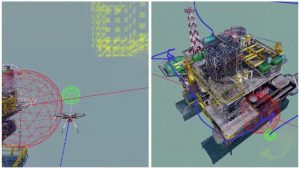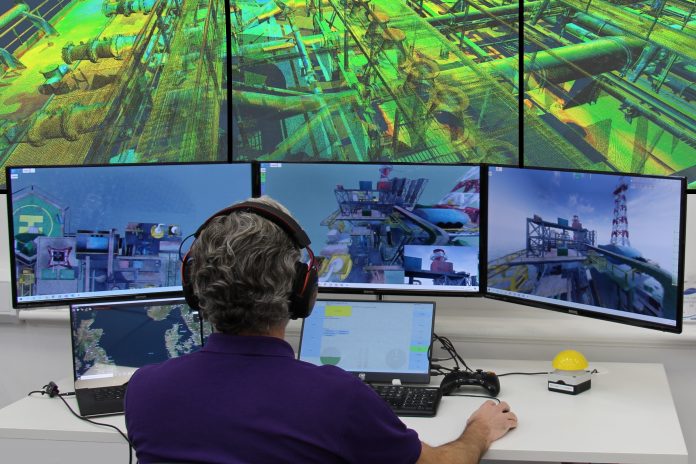Taking drones beyond visual line of sight will supercharge construction quality, productivity and efficiency, says John McKenna, CEO of sees.ai
Twenty years ago, I was a chartered civil engineer working at Arup, one of the world’s leading engineering consultancies. I worked in the design office and as the design team representative on construction sites, including for the design and build of Portcullis House in Westminster and the new grandstand at Lord’s Cricket Ground. During that time, I experienced first-hand just how complex construction can be; and I clearly remember the risks we took to help address problems and unblock progress.
Fast forward to today – increasingly, these problems are being solved using digital tools: simulations to predict performance in the real world; BIM to capture and express the full design intent – from aesthetics, structure and materials to build-sequence and budget; and reality-capture to monitor progress on site – for comparison to simulations and BIM. This combination is called the digital twin and, according to McKinsey, companies that fully exploit it can increase productivity by up to 15%. Apply that to infrastructure spending in the UK alone and this equates to £7bn of savings per year, every year.
But to build a fully working digital twin, you need data, tonnes of data. In the past few years, industries like construction, infrastructure and oil & gas have successfully experimented with using drones for reality capture at small scale (just one of several tools, but a uniquely adaptable tool). According to PwC’s Skies Without Limits report, drones can carry out site surveys up to 400 times quicker than by traditional methods.
But now, if we are to support companies across hundreds of sites and national scale infrastructure – we need to use drones at large scale. And that’s where we hit a brick wall.
So what’s the problem?
Today, commercial drone services almost everywhere in the world are delivered under a standard regulation called Visual Line of Sight (VLOS). This regulation requires a professional pilot to travel to the mission site and to fly the drone in such a way that they can keep it in direct, unaided sight at all times. This regulation was perfect for kicking the drone industry off but 10 years into the journey, it’s now the big blocker: for clients, the resulting service is unresponsive (wait for the pilot to arrive), inconsistent (result depends on the skill and care of the pilot that turns up) and expensive (price includes the cost of pilot travel) – with no economies of scale. For service providers, the resulting model is challenging to scale as it involves recruiting, managing and continuously upskilling drone pilot teams and managing their travel to and from mission sites.
Evolving regulation
Beyond Visual Line of Sight (BVLOS) operation is the inevitable next step for the drone industry. In recent years, regulators have been approving BVLOS operations on an exceptional one-off basis, for R&D purposes. But now their focus has evolved to working with pioneering companies to together develop regulations, technologies and operating models that can unlock routine commercial BVLOS operations at scale.
Here in the UK, this work is championed in the national interest by the Department for Business, Energy & Industrial Strategy via two initiatives: the UK government Drone Pathfinder programme (also sponsored by the Department for Transport and the Civil Aviation Authority); and the Civil Aviation Authority’s Regulatory Sandbox.
We are one of only 10 entities selected into the Sandbox (alongside Amazon and Boeing) and one of only four entities selected into the Pathfinder; and we are the only entity selected into both. Our focus is breaking new regulatory and technical ground to pioneer BVLOS operations in industrial sites – primarily for clients in the construction, infrastructure and oil & gas industries.
Live trials
Our BVLOS solution has been in development for three years. This month, we will begin trialling it on client sites for the first time, bolstered by funding from UK Research & Innovation, after we led a winning consortium in a high-profile aviation and aerospace competition, the Future Flight Challenge.
 Between now and March 2022 we will run 10 trials in a variety of industrial and urban environments – addressing a series of increasingly challenging use-cases put forward by end-clients including Skanska, and Skanska Costain and STRABAG, in partnership with HS2, Atkins and Network Rail.
Between now and March 2022 we will run 10 trials in a variety of industrial and urban environments – addressing a series of increasingly challenging use-cases put forward by end-clients including Skanska, and Skanska Costain and STRABAG, in partnership with HS2, Atkins and Network Rail.
These entities recognise the potential our technology holds to facilitate better and faster exchange of information between offsite and onsite; to improve the health & safety of onsite workers; and reduce the number of visits to site overall. And in Covid times, the value of these benefits is only greater.
In 2018, engineering enterprises employed 19% of the UK workforce and generated 23% of the UK’s turnover. We all have a huge need for these businesses, their assets, sites and output. This is a huge lever for BVLOS to act upon. We are excited: recent progress suggests that drone services will be available to industry at scale for the first time, sooner rather than later.
John McKenna
Chief executive
sees.ai
Twitter: @only1jmck
LinkedIn: Sees.ai














